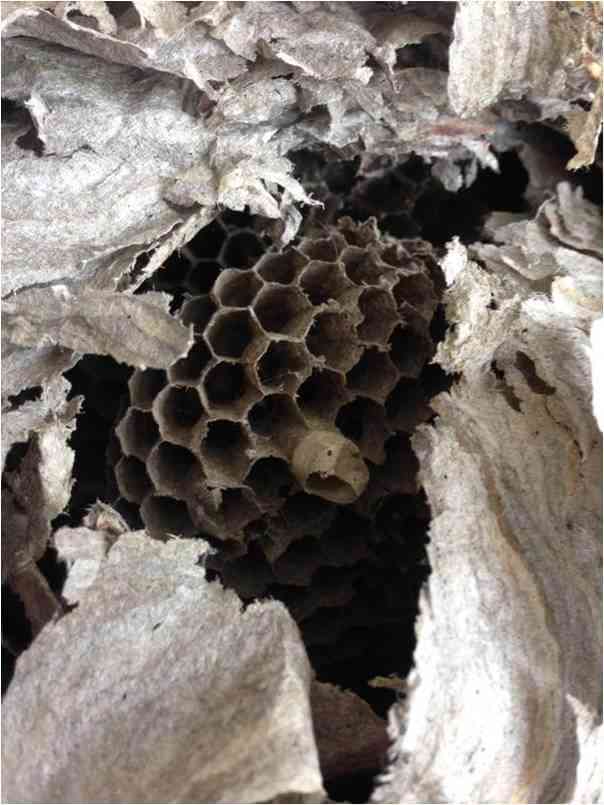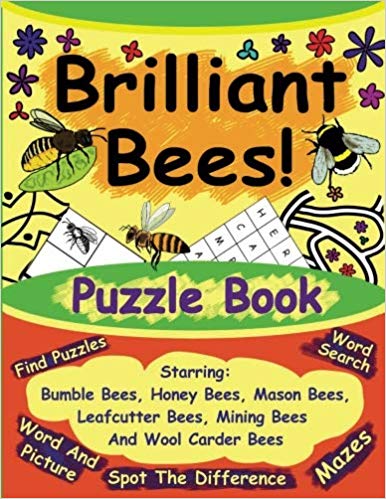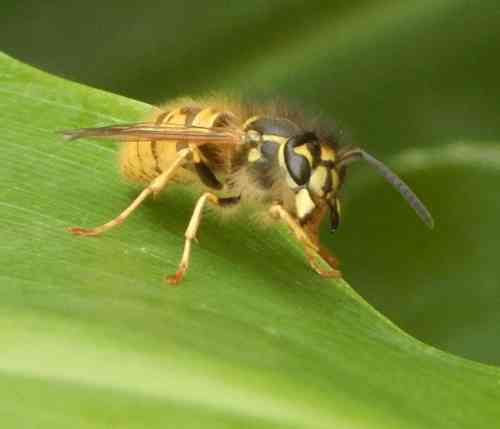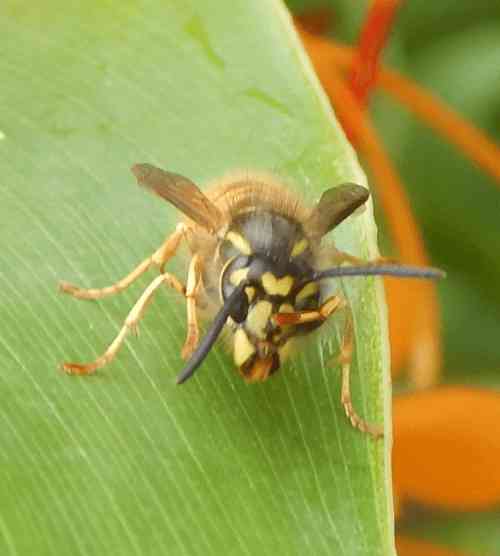Wasps And Hornets - What's The Difference?
Wasps and hornets (like bees), are of the insect order
Hymenoptera. But what is the difference between wasps and hornets?
Wasps And Hornets - What's The Difference Between The Two?
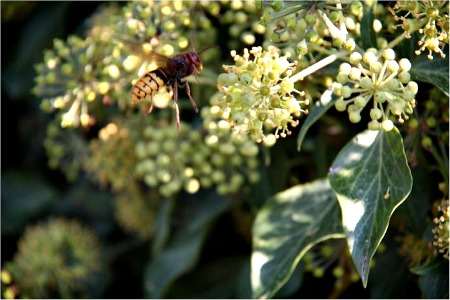 European hornet - Vespa crabro
European hornet - Vespa crabroFirstly, it must be understood that the term 'wasp' is actually an umbrella term that in fact, includes the hornet! Indeed, hornets are simply a type of wasp.
To be more specific, hornets belong to a wasp family called 'Vespidae'.
Hornets share the Vespidae wasp family with yellowjackets, mason wasps, potter wasps, pollen wasps, paper wasps and others.
(It's probably fair to say (and Eric R Heaton1 agrees), that in general, wasps in the Vespidae family are mostly the wasps we first think of when we hear the word 'wasp', it's just that many people are surprised to find that hornets belong in the same group).
Wasps are an incredibly diverse group of insect, with a fascinating range of behaviours and physical characteristics. Therefore, for the purposes of this page, I am going to focus on the difference specifically between hornets and the wasps sometimes referred to as 'yellowjackets', (those wasps from the Vespula and Dolichovespula generas), since I believe most people asking about the difference between wasps and hornets, are actually referring to these two groups.
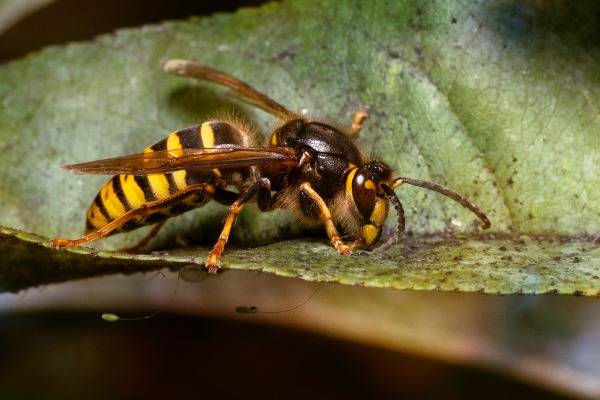 The median wasp (Dolichovespula media)
The median wasp (Dolichovespula media)Key differences between yellowjacket wasps and hornets
The fact that yellowjackets and hornets belong to the same wasp family actually demonstrates that both share some common characteristics, as well as some differences. Both live in colonies with numerous workers and construct hexagonal nest cells from slithers of plant matter. Both yellowjacket and hornets may use their stings in colony defence.
However, there are key differences.
1. Size
Hornets are larger and more robust in appearance than yellowjackets. Hornets typically measure over an inch in length (3 cm), but the queens of the largest known hornet, the Asian Giant hornet (Vespa mandarinia) measure about 2 inches long (5.08 cm).
Yellowjackets on the other hand, are smaller, with a body length of less than an inch (0.78 inches) - around 2 cm - for most species
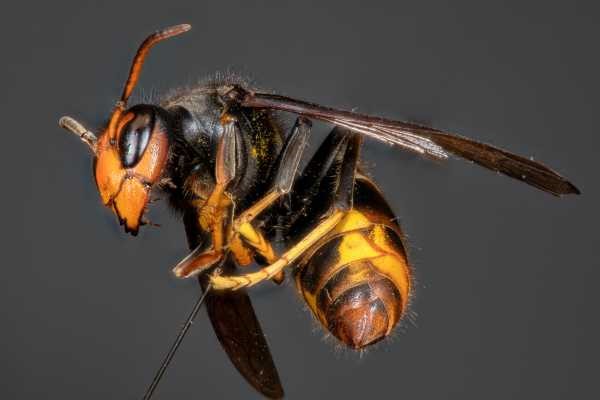 Asian hornet - Vespa velutina
Asian hornet - Vespa velutina2. Appearance
Most yellowjackets are fairly similar in appearance, with yellow and black, or less commonly, black and white (the white and black bald-faced hornet is actually a yellowjacket, and not a hornet at all).
Hornets are slightly more diverse in appearance, sometimes with tinges of red to brown, or primarily black2 (depending on species and world region).
3. Feeding
Both hornets and yellowjackets feed protein in the form of other insect prey to the offspring. However, yellowjackets may also feature on the menu for hornet offspring.
Research has shown that the larger yellowjacket, the baldfaced hornet, may take ground-nesting yellowjacket species as prey for their young - see: The Bald-faced Hornet - Dolichovespula maculata.
4. Geographical distribution
Vespula and Dolichovespula are found primarily temperate regions3. Vespa occurs in both tropical and temperate regions3.
Myths about yellowjackets and hornets
Certainly, there is conflicting information about yellowjackets and hornets. When composing an article such as this, I do try to find actual studies to back up claims, rather than simply general statements.
On the whole, I have found there are misunderstandings around the following:
Aggression
Some articles state that yellowjackets are more aggressive than hornets, and vice versa. However, I can find no single definitive study comparing aggression levels of the two.
It would also be relevant to take into account the differing behaviours of specific species (in other words, a single statement cannot necessarily be applied to the whole group).
It is probably fair to state that both yellowjackets and hornets can exhibit aggressive behaviours if their nests are disturbed (i.e. they may exhibit defensive behaviours).
Other articles label the behaviour of yellowjackets, in foraging around refuse or picnic tables for food, as 'aggressive'. I think it would be worth examining this more closely, taking into account human behaviours. Read actual experiences of visitors to this website and yellowjacket wasp nests for an alternative view!
Sting pain
There is a general assumption that hornet stings are always more painful than other stings. In comparison with yellowjackets, the picture is a little more complex, and depends on species - see bees vs wasp vs hornet stings.
Nest sites
Some articles assume that all yellowjackets nest in the ground, whereas hornets are aerial nesters.
In fact, Dolichovespula are aerial nesters.
Likewise, some hornet species may construct aerial nests that hang from a tree branch, whilst others nest in a cavity, such as a hollow tree trunk.
Others, such as the Northern giant hornet (Vespa mandarinia) nest underground4.
Please note that the Giant Ground Hornet (Sphecius Horgardii) is not a true hornet at all, but is a type of Cicada killer wasp of the genus Sphecius5.
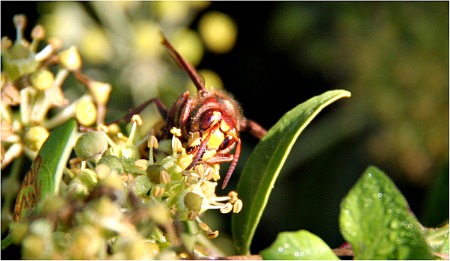 European hornet - Vespa crabro
European hornet - Vespa crabroReferences
1. Eric R. Heaton; Wasps – The Astonishing Diversity Of A Misunderstood Insect, Princeton University Press 2021.
2. Allan H Smith-Pardo, James M Carpenter, Lynn Kimsey, The Diversity of Hornets in the Genus Vespa (Hymenoptera: Vespidae; Vespinae), Their Importance and Interceptions in the United States, Insect Systematics and Diversity, Volume 4, Issue 3, May 2020, 2, https://doi.org/10.1093/isd/ixaa006
3. Federico Lopez-Osorio, Kurt M. Pickett, James M. Carpenter, Bryan A. Ballif, Ingi Agnarsson, Phylogenomic analysis of yellowjackets and hornets (Hymenoptera: Vespidae, Vespinae), Molecular Phylogenetics and Evolution, Volume 107, 2017, Pages 10-15, ISSN 1055-7903,
https://doi.org/10.1016/j.ympev.2016.10.006.
(https://www.sciencedirect.com/science/article/pii/S1055790316302688).
4. Article: Northern Giant Hornets - Penn State Extension.
5. CICADA KILLER, GIANT GROUND HORNET, SPHECIUS HOGARDII (LATREILLE) AND SPHECIUS SPECIOSUS (DRURY) (INSECTA: HYMENOPTERA: SPHECIDAE), University of Florida, Institute of Food and Agricultural Sciences.
If you found this page helpful or interesting, I'd really be grateful if you would share it with others - if not this page, perhaps another, such as Gardening For Bees.
Thank you so much :) .
